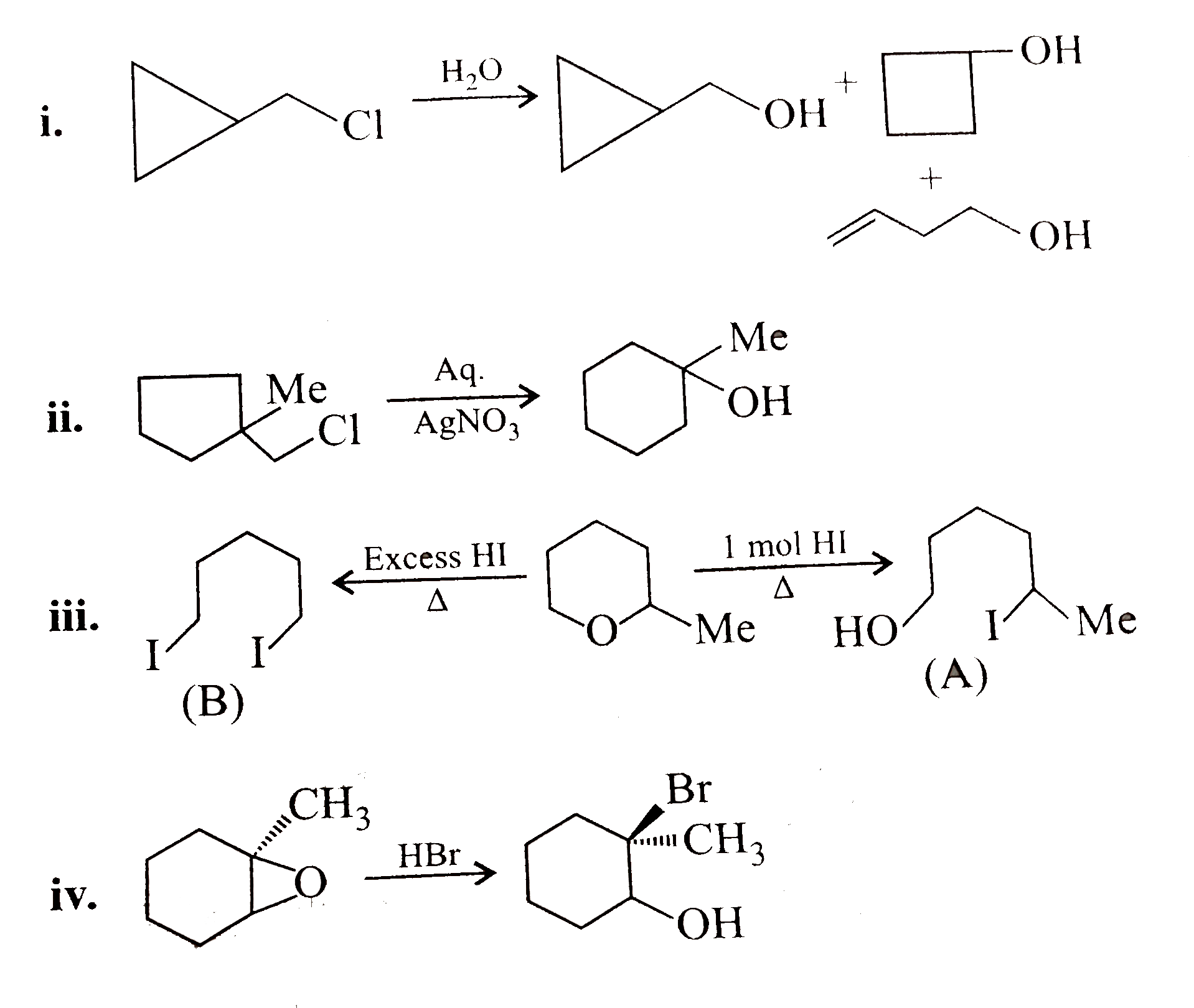Give suitable reasons for the following :
Lead (IV) Chloride is highly unstable towards heat.
To explain why Lead (IV) Chloride (PbCl4) is highly unstable towards heat, we can break down the reasoning into several steps:
Step 1: Formation of Lead (IV) Chloride
Lead (IV) Chloride is formed when lead(II) chloride (PbCl2) reacts with chlorine gas. The reaction can be represented as:
PbCl2+Cl2→PbCl4
Step 2: Stability of Oxidation States
Lead can exist in multiple oxidation states, primarily +2 and +4. Among these, the +2 oxidation state (Pb^2+) is more stable than the +4 oxidation state (Pb^4+). This is due to the inert pair effect, which is a phenomenon observed in heavier p-block elements.
Step 3: Inert Pair Effect
The inert pair effect refers to the tendency of the s-electrons (in this case, the 6s electrons of lead) to remain non-bonding or inert in compounds, especially as the atomic number increases. For lead, the +2 oxidation state is favored because the 6s electrons do not participate in bonding as readily as the 6p electrons.
Step 4: Decomposition of Lead (IV) Chloride
When Lead (IV) Chloride is heated, it tends to decompose into Lead (II) Chloride and chlorine gas:
PbCl4heat−−→PbCl2+Cl2
Step 5: Conclusion on Stability
The instability of PbCl4 towards heat can be attributed to the preference of lead to exist in the +2 oxidation state due to the inert pair effect. As a result, PbCl4 readily decomposes to the more stable PbCl2 upon heating.
Summary
Lead (IV) Chloride is highly unstable towards heat because:
1. It is formed from a less stable oxidation state (+4) compared to the more stable +2 oxidation state.
2. The inert pair effect causes the +2 state to be favored, leading to the decomposition of PbCl4 into PbCl2 and Cl2 when heated.
---
Lead (IV) Chloride is formed when lead(II) chloride (PbCl2) reacts with chlorine gas. The reaction can be represented as:
PbCl2+Cl2→PbCl4
Lead can exist in multiple oxidation states, primarily +2 and +4. Among these, the +2 oxidation state (Pb^2+) is more stable than the +4 oxidation state (Pb^4+). This is due to the inert pair effect, which is a phenomenon observed in heavier p-block elements.
The inert pair effect refers to the tendency of the s-electrons (in this case, the 6s electrons of lead) to remain non-bonding or inert in compounds, especially as the atomic number increases. For lead, the +2 oxidation state is favored because the 6s electrons do not participate in bonding as readily as the 6p electrons.
When Lead (IV) Chloride is heated, it tends to decompose into Lead (II) Chloride and chlorine gas:
PbCl4heat−−→PbCl2+Cl2
The instability of PbCl4 towards heat can be attributed to the preference of lead to exist in the +2 oxidation state due to the inert pair effect. As a result, PbCl4 readily decomposes to the more stable PbCl2 upon heating.
Lead (IV) Chloride is highly unstable towards heat because:
1. It is formed from a less stable oxidation state (+4) compared to the more stable +2 oxidation state.
2. The inert pair effect causes the +2 state to be favored, leading to the decomposition of PbCl4 into PbCl2 and Cl2 when heated.
Topper's Solved these Questions
- P-BLOCK ELEMENTSBOOK - CBSE COMPLEMENTARY MATERIALCHAPTER - P-BLOCK ELEMENTSEXERCISE - 5-MARK QUESTION
16 Videos
- P-BLOCK ELEMENTSBOOK - CBSE COMPLEMENTARY MATERIALCHAPTER - P-BLOCK ELEMENTSEXERCISE - UNIT TEST
8 Videos
- P-BLOCK ELEMENTSBOOK - CBSE COMPLEMENTARY MATERIALCHAPTER - P-BLOCK ELEMENTSEXERCISE - 2-MARK QUESTION
25 Videos
- ORGANIC CHEMISTRY: SOME BASIC PRINCIPLES AND TECHNIQUESBOOK - CBSE COMPLEMENTARY MATERIALCHAPTER - ORGANIC CHEMISTRY: SOME BASIC PRINCIPLES AND TECHNIQUESEXERCISE - Unit test
16 Videos
- REDOX REACTIONS BOOK - CBSE COMPLEMENTARY MATERIALCHAPTER - REDOX REACTIONS EXERCISE - UNIT TEST
4 Videos
Similar Questions
Give a suitable mechanism for the following :
 .
.
View SolutionRationalise the given statements and give chemical reactions.
a. Lead(IV) chloride reacts with Cl2 to give PbCl4.
b. Lead(IV) chloride is highly unstable towards heat.
c. Lead is known not to form an iodide, Pbl4.
View SolutionRationalise the given statements and give chemical reactions.
a. Lead(II) chloride does not react with Cl2 to give PbCl4.
b. Lead(IV) chloride is highly unstable towards heat.
c. Lead is known not to form an iodide, Pbl4.
View SolutionAssign suitable reason for the following:
SF6 in inert towards hydrolysis.
View SolutionGive suitable reasons for the following statements: The crystals of washing soda change to white powder on exposure to air.
View SolutionGive suitable reasons for the following statements: We feel burning sensation in the stomach when we over eat.
View SolutionGive suitable reasons for the following statements: A tarnished copper vessel regains its shine when rubbed with lemon.
View SolutionGive suitable reasons for the following statements: An aqueous solution of sodium chloride is neutral but an aqueous solution of sodium carbon ate is basic.
View SolutionGive suitable reasons for the following statements: Rain water conducts electricity but distilled water does not.
View SolutionGive reason for the following in one or two sentences:
'Although benzene in highly unsaturated, normally it does not undergo addition reaction'.
View Solution
